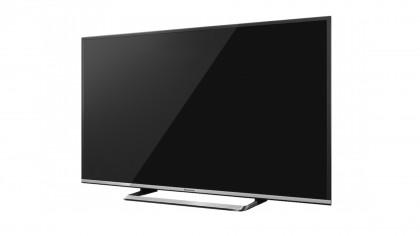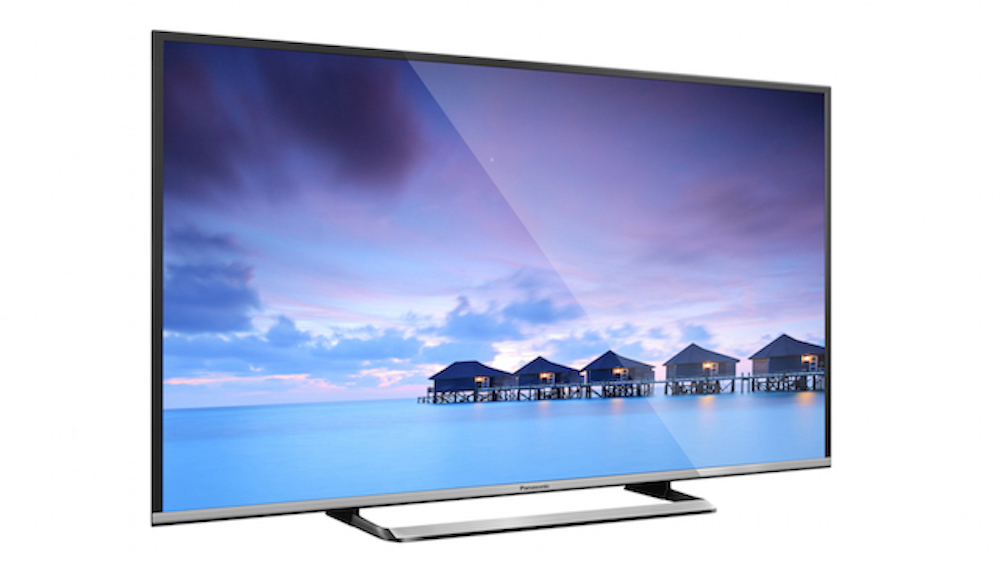Why you can trust TechRadar
I was pleasantly surprised by how little of a negative jolt I felt when going back to watching full HD on the 50CS520 after a run of testing 4K UHD TVs.
The 50CS520 reveals pretty much instantly that it's definitely not just some half-arsed budget model Panasonic has shoved out the door because it felt it had to. Its images immediately betray plenty of signs of Panasonic's long experience of knowing how to make a good TV picture.
Particularly welcome in light of Panasonic's unfortunate flirtation with low-contrast IPS-type panels for some of its 2014 range is the 50CS520's black level performance. Dark scenes enjoy rich, deep black colours that given them a naturalistic and cinematic finish in excess of anything I might have expected to see for only a little over £500.
There's a reasonable sense of depth and detail to dark scenes too, while contrast - the ability to portray bright and dark content in the same frame - is also strong. This all suggests that the panel at the 50CS520's heart has a natural affinity for contrast rather than having to rely on distractingly draconian light control measures.

Sharpness and detail
Also highly impressive is the clarity of the 50CS520's HD images. Detailing and textures look pretty much as good as they probably can with a non-4K screen - better than HD, in fact - backed up superbly by a dearth of noise and some startlingly refined colour mapping for such an affordable TV.
The mostly excellent sharpness does take something of a hit when Panasonic's screen has to deal with a lot of motion - especially camera pans - as both judder and resolution loss come into play. However, neither of these issues affect images as aggressively as they historically tend to at the 50CS520's level of the TV market.
What's more, since Panasonic's TV isn't over-burdened with heavy duty motion processing you aren't ever in danger of ending up with pictures that look unnatural or overwhelmed by common motion processing artefacts like flickering over areas of really fast motion or shimmering haloes around moving objects.
There's frankly little worse in the TV world than a TV that tries to go too heavy on the video processing without having the processing power to back it up. So it's a relief to find the 50CS520 not falling into the trap.
Needless to say, though, the 50CS520's picture quality isn't wholly immune to its aggressive price point and relatively unassuming picture specification.
Brickbats
Its biggest problem by far is the potential for patches of excess light to appear in the corners of the screen during dark scenes. Especially if those dark scenes happen to have a bright element or two towards their centre.
The 'clouding' effect I'm talking about is subtle enough not to be a significant problem during bright room viewing, and pales into insignificance versus the backlight woes associated with Panasonic's previous IPS-based TVs.
But if you fancy a serious lights-down movie session you will likely find yourself having to significantly reduce the 50CS520's backlight setting in order to reduce the corner clouds to a point where they're no longer distracting. I found that it was only when I got the backlight down to barely its 20 per cent level that the clouding really dissipated - and of course, by the time pictures significantly less bold and punchy than they did before.
Still, that's not to say the 50CS520's pictures don't still enjoy a solid sense of contrast and dynamism for the set's money even after a 'declouding' calibration.
Colours with HD sources still look likeably natural during dark scenes too. It does have to be added, though, that downgrading the backlight setting so drastically does mean some previous visible grayscale information and dark area detail gets pushed out of the darkest corners of the picture.
One other area where the 50CS520 didn't blow me away is its upscaling of standard definition.
Panasonic's processing engine does a good job of adding detail while simultaneously reducing source noise, but colours look unbalanced and strained, and I wasn't able to find any blend of settings in the TV's set-up menus that really addressed the problem.
Although I guess you could always take the drastic but not recommended measure of simply not watching standard definition content any more…
Current page: Picture Quality
Prev Page Introduction and features Next Page Usability, Sound and ValueJohn has been writing about home entertainment technology for more than two decades - an especially impressive feat considering he still claims to only be 35 years old (yeah, right). In that time he’s reviewed hundreds if not thousands of TVs, projectors and speakers, and spent frankly far too long sitting by himself in a dark room.

